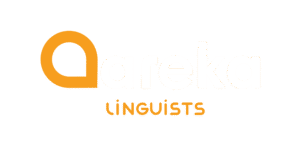Europe is home to 24 official languages and dozens more regional tongues, making it one of the most linguistically diverse regions in the world. This diversity is a strength, but it also presents a unique challenge: how do nations, businesses, and institutions communicate seamlessly across so many languages? The answer lies in simultaneous interpretation and language localization, the true backbone of Europe’s international dialogue.
The Multilingual Identity of Europe
From German engineering firms to French medical researchers, from Spanish exporters to Norwegian oil and gas experts, every sector in Europe thrives on cross-border cooperation. Yet without a way to bridge language gaps, trade negotiations, medical symposia, and business meetings would stall. Translation, localization, and real-time interpretation allow Europe’s multilingual identity to fuel growth instead of creating barriers.
Why Simultaneous Interpretation Matters in Europe
At the European Parliament, every session is powered by interpreters who ensure that 24 official languages can be spoken and understood instantly. The same principle applies in boardrooms, conferences, and summits across the continent:
- In business and trade, simultaneous interpretation accelerates decision-making and builds trust.
- In the oil and energy sector, precise interpretation prevents costly miscommunications.
- In the medical field, it enables life-saving research findings to be shared in real time across borders.
Localization: Beyond Words
While interpretation enables real-time dialogue, localization ensures long-term success. For European markets, this means tailoring communication to local cultures, industry standards, and regulations. Whether it’s a medical trial protocol in Italian, a business contract in Polish, or trade documentation in German, localization ensures accuracy, relevance, and compliance.
Native Translators and Interpreters: Europe’s True Bridge
Behind every successful translation or interpretation stands a native linguist. Their cultural insight ensures that a phrase carries not only the correct meaning but also the right tone. In Europe’s medical, trade, and energy sectors, the human touch of a native expert is what makes communication effective, trusted, and impactful.
Europe’s Languages as a Global Advantage
Far from being a barrier, Europe’s 24 languages are a global advantage—when paired with simultaneous interpretation and expert localization. By breaking language barriers:
- Businesses expand seamlessly across markets.
- Medical collaboration accelerates, spreading knowledge faster.
- Trade partnerships strengthen, enhancing Europe’s global competitiveness.
- Oil and gas dialogues succeed, backed by precision and trust.
In Europe, where multilingualism is part of daily life, simultaneous interpretation is the invisible bridge that keeps nations connected while opening doors to the wider world.

